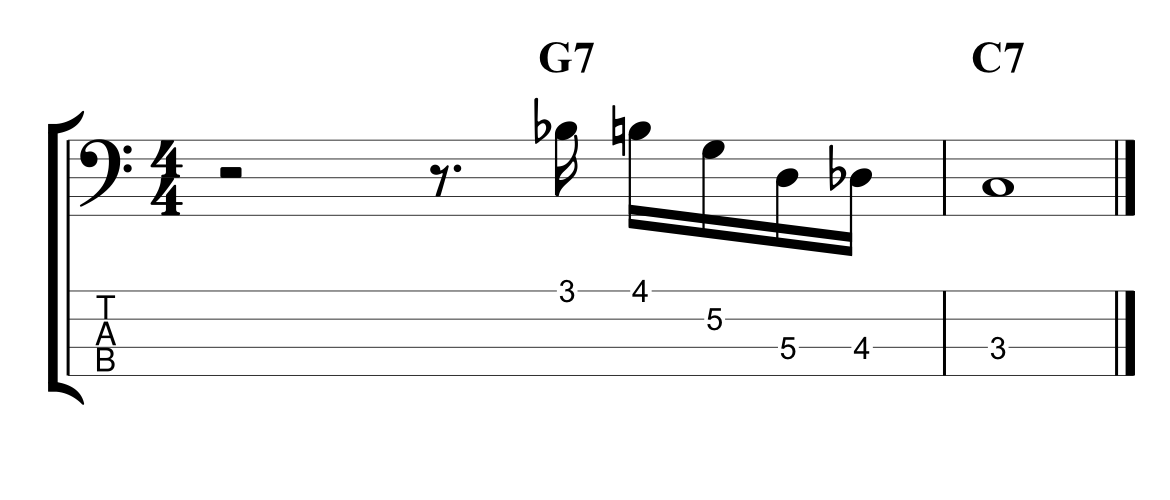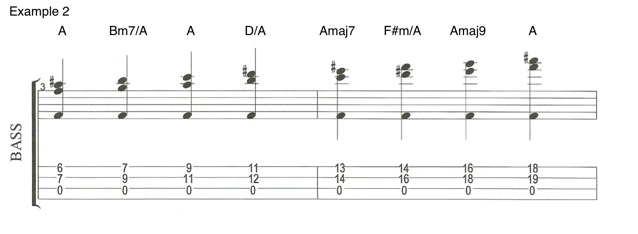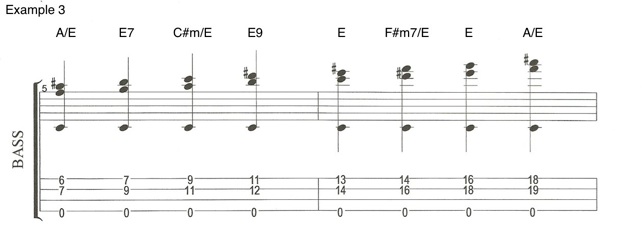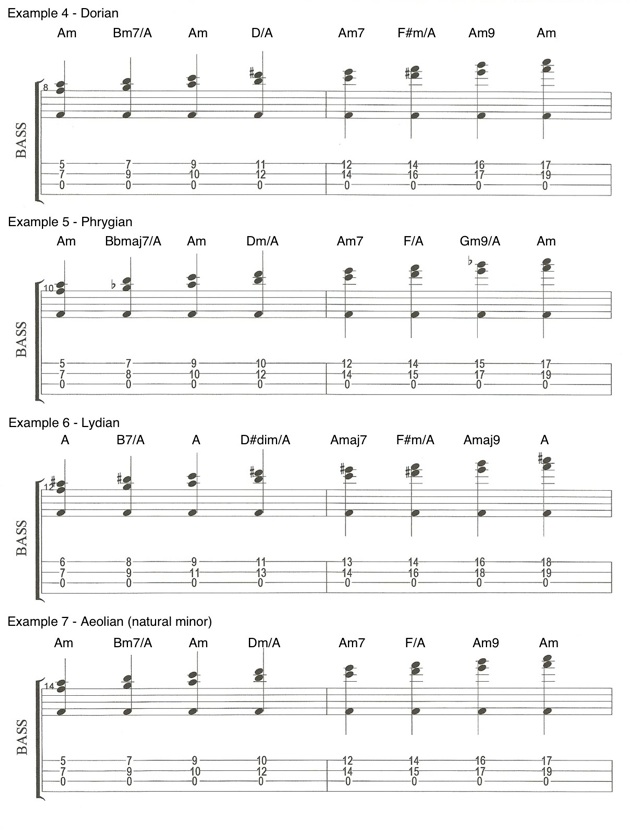Learn a Jazz Lick on Fretless Bass – Bass Practice Diary – 9th October 2018
The best way to use “licks” in jazz is a subject that divides opinion amongst musicians. I’ve written a melodic jazz lick in the key of F major over a II-V-I chord progression. In this post I’ll explain the lick and also share some of my thoughts on the use of licks in jazz.
What is a Jazz Lick?
In this context, a jazz lick is a melodic phrase, like a musical sentence. It’s a small fragment of melody that can comprise part of a longer jazz solo.
The debate amongst musicians tends to centre around whether or not it’s appropriate to use pre-learned licks as part of improvised jazz solos. It’s something that a lot of musicians do, including really good musicians, and the argument in favour of using licks is as follows. By learning licks, you are effectively learning jazz vocabulary. And the more jazz vocabulary you learn, the greater your range will be as an improviser.
This is why I practice jazz licks or phrases. Sometimes I work out my own ones, as I’ve done in this video and at other times I play licks written by other musicians, as I have in this video.
Personally, I don’t like to use pre-prepared licks when I’m performing or playing with a band. Improvising is the thing I love to do most in music. And I like to not know for sure where the music will go. Sometimes the music can suffer as a result of this approach, and if you’re looking for more consistency in your soloing, then learning licks is a good place to start. But, I wouldn’t choose to sacrifice the process of improving by using pre-learned licks. I’ve tried it and I just don’t enjoy it. To me it feels like trying to introduce a pre prepared sentence into a conversation. It might be a great sentence, but there’s every chance it won’t make sense depending on where the conversation goes.
However, using licks is something that probably all improvisers do either consciously or unconsciously. We all fall into patterns of playing, often without realising it. I’m fairly certain that even musicians who are very against the idea of using licks, often unknowingly fall back on melodic phrases that they’ve played many times before.
Fretless Bass Jazz Lick
If you follow my Bass Practice Diary you’ll know that I like to play jazz melodies on fretless bass. So, when I do this kind of practice, I’ll always use my fretless. Having said that, the lick will also work on a fretted bass.

I’ve TAB’d it for 4 string bass so everyone can play it. I sold my 4 string fretless bass after I got the 6 string Warwick Thumb SC in the video. That’s the only reason that I’m playing a 6 string bass in the video.
The lick is meant to be played over a II – V – I chord progression in the key of F major. Gm7 – C7 – Fmaj7. The II – V – I chord progression is the most common chord sequence in jazz. I won’t go into the theory of it because there are so many articles in existence about II – V – I’s, like this one. I’ll just explain what I’m playing on each chord.
Inside and Outside Notes
I think the reason that jazz musicians love to play over II – V – I chord progressions is because the V chord affords a great opportunity to use outside notes. Whereas the II and the I chord tend to favour the use of inside notes. So, you can create a feeling of starting inside the harmony and then moving outside on the V before coming back in on the I. This is a very jazz approach. The feeling of taking the harmony out and then bringing it back in, immediately sounds like jazz. And it’s that sound that I’ve tried to demonstrate with my jazz lick.
If you want to learn more about inside and outside notes and how to use them then check out this video.
Here’s what I’ve played on the II chord Gm7.

As you can see, all of the notes are in the key of F major, creating an inside sound. Which is fine because we’re about to step outside of the harmony on the V chord.
There are several chromatic alterations in this bar. Playing a b9 on beat one is a very strong statement that I’m taking the melody outside of the key signature. I love this kind of bold harmonic statement. The other chromatic alterations (outside notes) are the #9 and the b13. The final note of the bar is also an outside note, but in this case it’s functioning as a passing note rather than an altered chord extension. It’s simply a semi tone above G natural to take us to an A natural on beat one of the next bar.
How much outside harmony you choose to use is a matter of personal taste. I mentioned in the video that you could play a similar phrase on the V chord but with a natural 9th instead of the #9 and a natural 13th instead of the b13. It would go like this.

Finally, on the I chord, F major 7, the lick resolves itself onto the major 3rd A. Which is about the most inside sounding note you can use at this point.
As I’ve said, I’m not planning to use this lick again any time soon. For me, this is simply an exercise in expanding my jazz vocabulary so I can improvise lines in a similar way in future. But if you’d like to learn it, and use it in future, I would consider it an honour that anyone chooses to play one of my lines. I hope this has been helpful!














